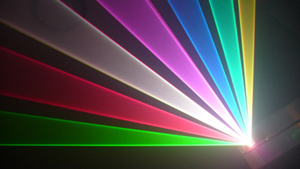Luminance is directly proportional to the radiant power of the laser, but the perceived brightness is not. Calculating the luminance of a light source is fairly easy. However, calculating the luminance of a laser beam in fog/haze at a certain viewing angle is not so easy, as it involves Mie theory. It would indeed be nice to have a single equation to relate the perceived brightness of lasers under different conditions, but such an equation would be complex and require a very large number of parameters.
As for the relation between luminance and perceived brightness one can use Stevens' power law. It is used to describe the relation between the magnitude of a physical stimulus and its perceived intensity. The equation is simply:

The question here is, what is the exponent
a? According to Stevens himself, it is 0.33 for a 5° target in dark, 0.5 for a point source and 1 for a briefly flashed point source. Which value of
a is most appropriate for our application? I don't know. Probably somewhere in the 0.33-0.5 region.
If
a is 0.33 the perceived brightness is proportional to the third root of the luminance, which means that an 8-fold increase in luminance is required to double the brightness. In the case of 0.5 it is instead proportional to the square root, thus only a 4-fold increase in luminance is required.
Of course, it is not really this simple (as always). Even if Stevens' power law would hold for monochromatic light sources, it certainly does not for polychromatic. For example, green-blue mixtures appear brighter than the sum of their components, whereas red-green mixtures appear dimmer.
I have some trouble with this field however, because it involves sensations. How can you quantify a sensation? That's psychophysics...




 Reply With Quote
Reply With Quote









